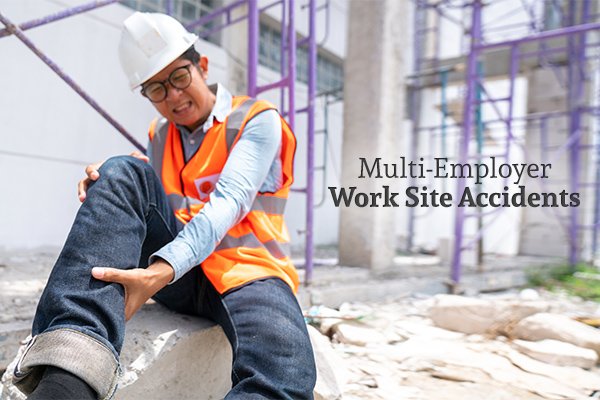
It’s an unavoidable fact of life that accidents will happen, even at the workplace. When multiple contractors, subcontractors, and other supervisors are involved in the circumstances of the accident, determining liability can be tricky. Here is more information about the legal principles that govern worksite liability in Texas.
OSHA’s Multi-Employer Worksite Doctrine
The federal Occupational Safety and Health Administration (OSHA) sets nationwide regulations for the safety and health standards in the workplace. If an employer allows an OSHA violation to go uncorrected and an employee is injured as a result, the employer may be subject to federal and state penalties in addition to owing damages to the injured person and their family. OSHA regulations are important for all workplaces, especially construction and industrial worksites.
In 2018, the Fifth Circuit Court of Appeals (which has jurisdiction over Texas, Missippi, and Louisiana) adopted OSHA’s “Multi-Employer Worksite Doctrine.” This doctrine dictates that any employers who exercise control over a worksite are liable for violations against OSHA regulations, even if the employer doesn’t actually employ the injured worker.
Because many worksites have employees (or contractors) of multiple businesses onsite at the same time, it can be tough to enforce workplace safety laws for each individual business in the same location. With the guidelines set forth by OSHA’s Multi-Employer Worksite Doctrine, general contractors in Texas may be responsible for subcontractors or even outside parties. Given these guidelines, the question of whether an OSHA violation occurred becomes a highly fact-intensive one.
What Does OSHA’s Multi-Employer Worksite Doctrine Mean for Texas Employers?
Because of the Multi-Employer Worksite Doctrine, each case of injury is decided based on the degree of the on-site supervisor’s control over the worksite. Judgments will be based on whether or not the individual in charge regularly inspected the worksite to ensure that no violations went uncorrected and whether they made timely responses to complaints or concerns raised by employees or other supervisors.
General notions of due process require that an entity is only liable for issues it knew (or reasonably should have known) were present. In other words, proving that potential dangers were never reported to the correct authority may be enough for an employer to sidestep liability. This makes it incredibly important for workers to report dangerous conditions to their supervisor as soon as they can.
This adoption of the OSHA’s Multi-Employer Worksite Doctrine for the Fifth Circuit means that federal OSHA regulations now have some additional support. When contractors know that they’ll be civilly liable for all the OSHA violations on the worksite – not just the ones that may impact their own workers – they’re more likely to take preventative and corrective measures to ensure the safety of all.
Texas Worksite Liability Laws
In addition to the federal protections under OSHA, Texas workers are also protected by state law doctrines. Even state employees can sue Texas in tort under the state Tort Claims Act. Employees who are injured, made ill, or killed on the worksite may be able to sue the general contractor (and any other responsible parties) in state court under general civil tort laws.
However, workers’ compensation generally covers workplace injury claims. To gain compensation for additional damages, it must be proven that the injured party’s work injury was not the result of some accident, but the result of gross negligence or reckless behavior. This typically requires the injured party to provide clear proof that the employer was made aware of dangerous conditions on multiple occasions but took no steps to remedy them. In some of the most egregious cases, an employer may be shown to have created dangerous conditions as a way to save money or finish the project more quickly.
Getting Compensation for a Multi-Employer Worksite Accident
Assigning fault in these types of work injury cases is a complicated process. Plaintiffs will typically need to name almost every employer on the worksite as defendants. While some employers may be dismissed as defendants if they can show substantial evidence that they had no part in the circumstances that led to the injury, failure to include them in the lawsuit on the front end can prevent a plaintiff from recovering all of the damages to which they are entitled.
When you need legal advice about a worksite accident in the city of Dallas, Amarillo, or Abilene, look no further than the Hernandez Law Group, P.C. Our skilled attorneys have years of experience litigating injury cases under Texas and federal law, so you can be sure that we will provide you with the advice you need to make some important decisions about your future. As one of only 2% of Texas attorneys who are board-certified in personal injury law, you can trust the Hernandez Law Group to provide you with superior representation in work injury cases, so be sure to schedule a free, no-obligation consultation online.
